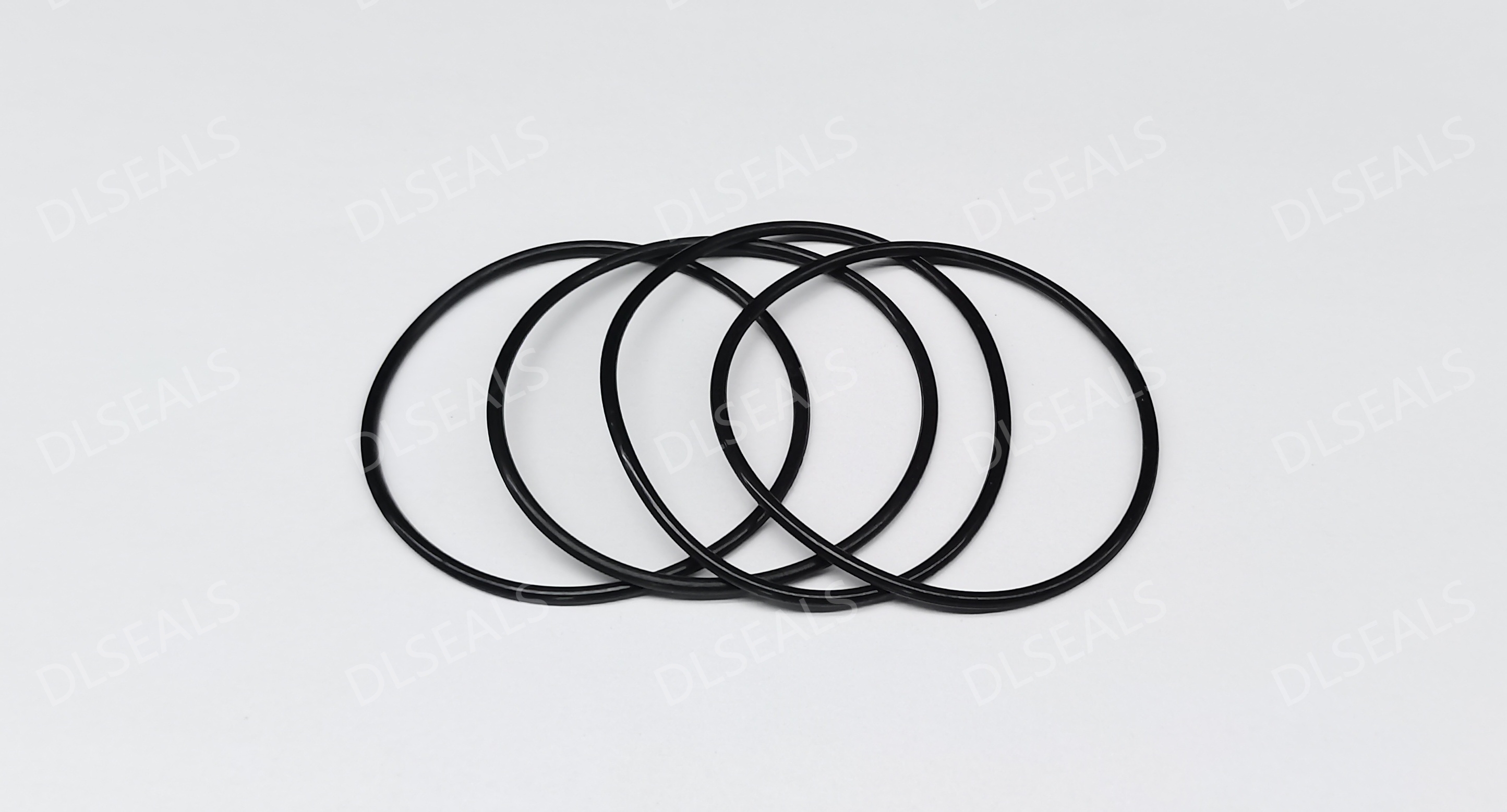News
A2024-09-04

Seals are vital components in mechanical equipment that prevent fluid leakage and protect equipment from external contamination. Fluororubber seals and nitrile rubber seals are two common sealing materials, each with its own characteristics and suitable for different application scenarios. This article will compare the performance, advantages and disadvantages of these two seals and their application areas in detail to help engineers and designers choose the most suitable sealing solution.
1. Fluororubber seals
Material properties
Chemical composition: Fluororubber (FPM or Viton) is a fluorine-containing synthetic rubber with excellent chemical corrosion resistance and high temperature resistance.
Temperature range: Fluororubber has a wide temperature resistance range and can generally work stably in an environment of -20°C to +200°C. Some special formulas can withstand higher temperatures.
Chemical resistance: Fluororubber has excellent tolerance to a variety of chemical media, such as acids, alkalis, solvents and fuels, and is not easily corroded by chemicals.
Advantages
High temperature resistance: Fluororubber can maintain good sealing performance in high temperature environments and is very suitable for high temperature application scenarios, such as engines, aerospace and other fields.
Excellent chemical resistance: Its excellent chemical stability enables it to cope with a variety of harsh chemical environments and is widely used in industries such as chemical, pharmaceutical, and oil and gas.
Aging resistance: Fluororubber is not easy to age or harden in long-term use, and maintains good elasticity and sealing performance.
Disadvantages
High cost: The production cost of fluororubber is high, which makes it relatively expensive.
Poor low temperature performance: Although fluororubber performs well at high temperatures, its elasticity and sealing performance may be affected in extremely low temperature environments.
Application areas
Automotive industry: Used in high temperature and high chemical corrosion environments such as automobile engines and transmissions.
Aerospace: Used in high temperature and high pressure environments in aircraft fuel systems and hydraulic systems.
Chemical industry: Used in equipment and pipelines that handle various chemical media to provide reliable sealing.
2. Nitrile rubber sealing ring
Material properties
Chemical composition: Nitrile rubber (NBR or Nitrile) is a hydrogen-containing synthetic rubber, mainly copolymerized by butadiene and acrylonitrile.
Temperature range: The temperature resistance range of nitrile rubber is generally -30°C to +100°C, and some modified nitrile rubber can withstand higher temperatures.
Oil resistance: Nitrile rubber has excellent resistance to mineral oils, fuels and lubricants.
Advantages
Excellent oil resistance: Nitrile rubber can effectively resist the erosion of oils and fuels, and is suitable for oil seals and fuel systems.
Relatively low cost: Compared with fluororubber, the production cost of nitrile rubber is lower, making it more competitive in price.
Good elasticity: Nitrile rubber has excellent elasticity at room temperature and can provide good sealing effect.
Disadvantages
Poor high temperature resistance: Nitrile rubber does not perform as well as fluororubber in high temperature environment, and long-term use may cause aging and hardening.
Poor chemical resistance: It has poor resistance to certain chemical media (such as strong acids and strong alkalis) and is not suitable for highly corrosive environments.
Application areas
Automotive industry: Widely used in oil seals, gaskets and fuel systems of automobiles.
Mechanical equipment: Used for sealing various mechanical equipment, especially in oily environments.
Household appliances: seals used in household appliances, such as washing machines and refrigerators.
III. Performance comparison
Characteristics Fluororubber seals (FPM) Nitrile rubber seals (NBR)
Temperature resistance -20°C to +200°C -30°C to +100°C
Chemical resistance Excellent, resistant to a variety of chemical media Good, mainly resistant to oils and fuels
Aging resistance Excellent, not easy to age after long-term use Poor, may age after long-term use
Cost High, high production cost Low, relatively low production cost
Elasticity Good, but poor low temperature performance Excellent, good elasticity at room temperature
IV. Summary
Fluororubber seals and nitrile rubber seals each have their own advantages and limitations. Fluororubber seals are suitable for demanding industrial and aerospace fields with their excellent high temperature resistance and chemical resistance, while nitrile rubber seals are widely used in the automotive industry and general mechanical equipment due to their excellent oil resistance and low cost. When selecting a suitable sealing ring, it is necessary to make comprehensive considerations based on the specific application environment and performance requirements to ensure the reliability of the sealing effect and the long-term stable operation of the equipment.
[DLSEALS kindly Reminder] Sealing issues? Turn to DLSEALS! As a sealing component manufacturer, we specialize in customizing sealing components, providing a full range of services from design, research and development, production, testing, and more. If you have more information you'd like to know, feel free to contact us directly. DLSEALS's product experts are dedicated to serving you!